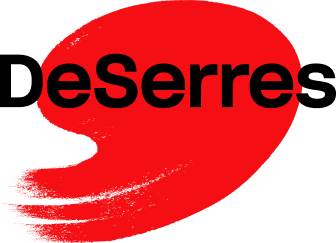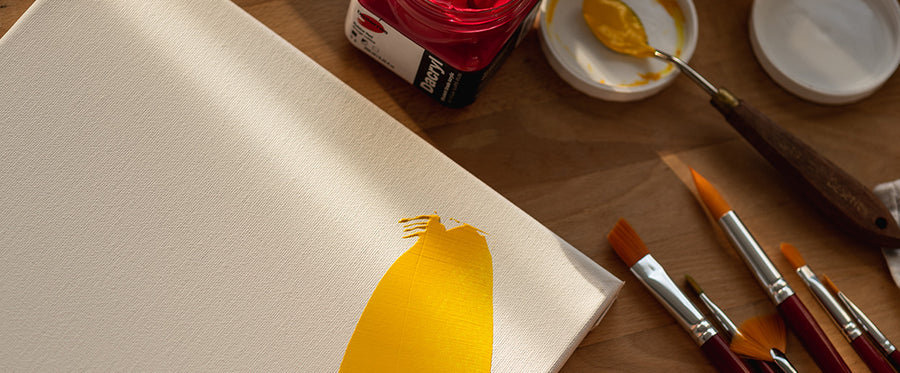Richard is a multidisciplinary artist who has been immersed in creativity since childhood, and has been exploring it ever since. Circus arts, painting, sculpture, drawing: his imagination has no limits.
Inspired by Dalí and his atmospheric perspectives, Disney and its characters, fantastic tales and legends: Richard does not hesitate to mix various elements to create his own universe.
"Planet Richard" was built methodically, like a self-taught formula, by observing and reproducing his environment in 3D: "Very early, I learned to draw with several vanishing points. I gave myself lessons and learned to break down the elements that surrounded me into volumes, into cylinders. I often started over, I forced myself to start over. I was very strict with myself.
Today, Richard creates his own "parallel" universes: he transposes reality into fantastic surrealist creations to give life to his own characters.
WHAT INSPIRED HIM TO START DRAWING OUTDOORS
Richard was born near the mountains. His parents' house was surrounded by forests that already nourished his inspiration and dreams. He spent and still spends his time in nature, so it was only natural that he took his art supplies outdoors.
"The advantage of drawing outside is that you can observe everything in 3D, which you then draw in 2D, and you can work on perspective, which is very important in drawing."
In Richard’s backpack, you will always find 1, 2 or sometimes 3 pads or notebooks, in 2 or 3 different sizes, which does not go unnoticed when he travels in airports: “The customs officers find me strange!”
For Richard, creativity happens anywhere, anytime, as he infuses the energy of places into his drawings: he arrives early to work to draw in an aquarium, he sketches furtive moments before a play to capture the atmosphere, he captures the energy of Disney theme parks, or even Cirque du Soleil rehearsal rooms.
Finally, on-the-spot creativity is a great way to practice being present, using your sketchbook instead of your cell phone. It also allows us to temporarily disconnect from our busy lives.
“I’m very extroverted, but I also like my alone time. Drawing on the street is a great way to meet people, it intrigues them. They approach you discreetly. You seem mysterious to them, it makes them dream. You meet people that you would never have dared to approach.”

HOW HE FINDS HIS SUBJECTS
Richard believes that to find drawing subjects, one can always use visual references in books or photographs. You can also walk around with a notebook and pencil (or ballpoint pen) in hand, sketching elements of a landscape or building.
Richard’s inspiration lies somewhere between reality and his imagination. During our interview, he recalls a session on a bench: “While I was drawing sparrows that were all around me, a small, younger, cute one was staring at me. As I drew him, I created an armour for him.” That’s how his warrior bird series was born. That’s also how, under his pencil stroke, some houses float in the air, or their walls turn into cheese.

WHAT YOU'LL FIND IN HIS BACKPACK
• One (or more!) spiral-bound or hardcover notebook(s). While spiral-bound notebooks take up less space on your lap while you create, they are more fragile. The ideal notebook, according to Richard, is the hardcover notebook: with a ribbon bookmark and an elastic closure.
• A ballpoint pen. “If you're travelling, you'll find them everywhere in hotels. I use them to work in chiaroscuro with crosshatching.”
• A watercolour set and a reservoir brush: “The reservoir brush can be difficult to work with 100%. Not wet enough. Too wet. So I also carry my case with other brushes.”
• Markers: “My favourite colours are warm greys, cold bluish greys, pale purples, very pale blues. Layering them automatically creates shadows. Also, oranges, ochre, yellow, green, brown: colours found in nature.”
• Headphones: “I often listen to music when creating: lyrical films, toy soundtracks, The Nutcracker, etc.”
• A water bottle: “to hydrate and to rinse!”
• Aq water cup “with clip”!
And what about posture?
“This is how I like to create: Sitting on the floor, with my cup between my knees, my back leaning somewhere. My thighs are my slanted surface!”

HIS LAST TIP
Finally, to an artist who may be hesitating to step outside for their first nomadic drawing experience, Richard would surely answer: “Choose a sunny day, with good weather (humidity can influence how your artwork looks on paper), not too far from home.
Sit at a café table, on a terrace. Tune into reality, the present moment. Challenge yourself to do quick sketches, moving elements: 30 seconds, 1 minute, 5, 10 or 15 minutes. Learning to draw faster increases your technical quality and allows you to develop a confident stroke.
Also, don’t hesitate to work with a ballpoint pen so that you don’t have the power to erase.
“Don’t be afraid of the unknown, dare to explore it.”











